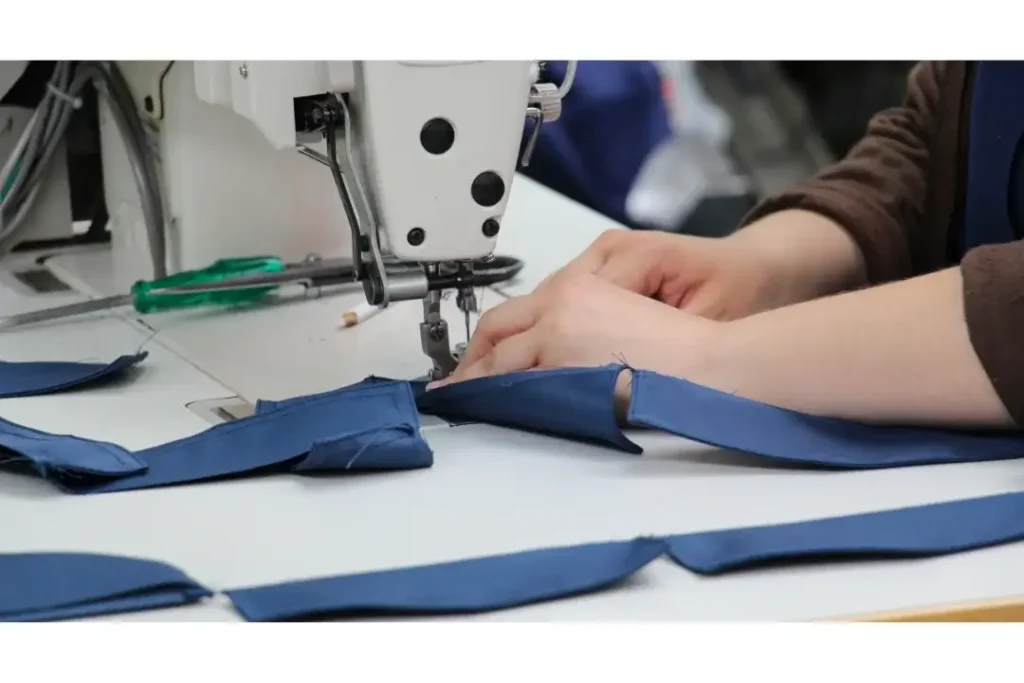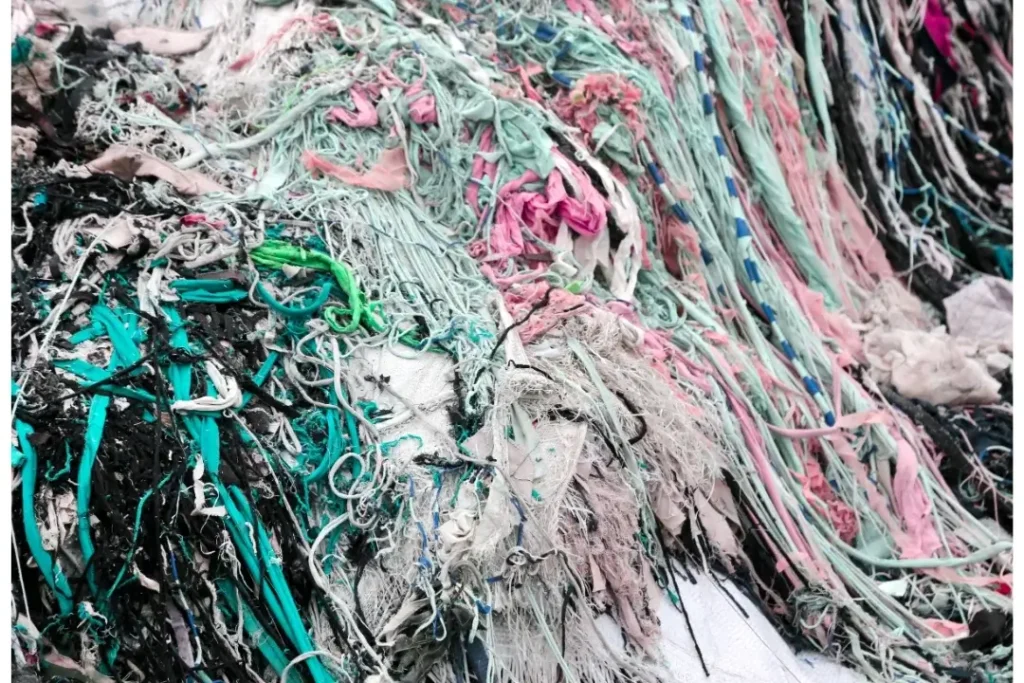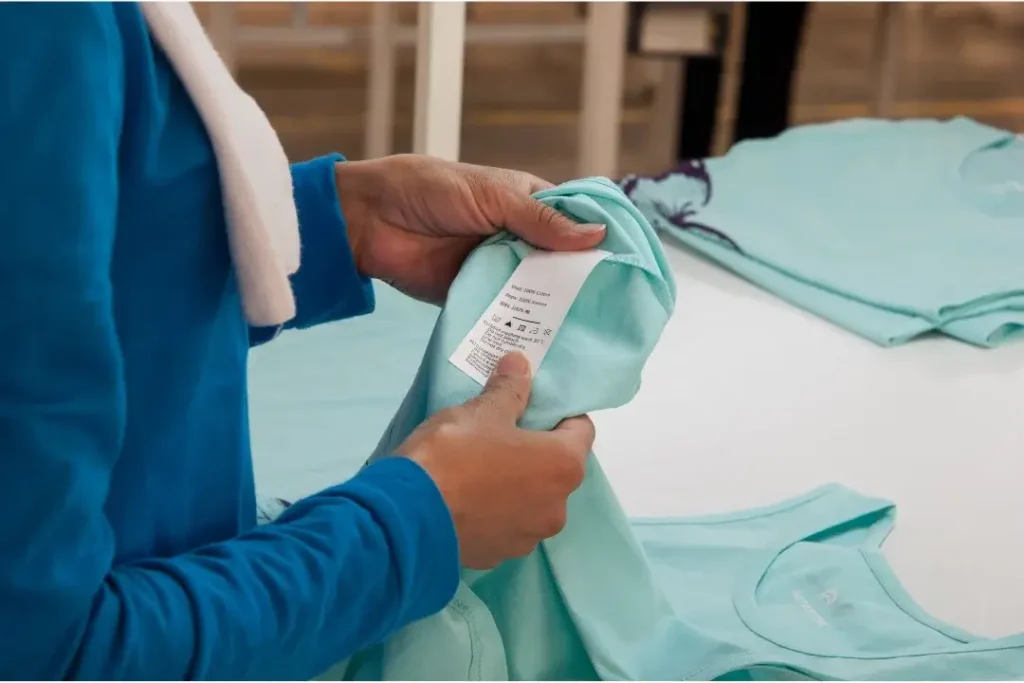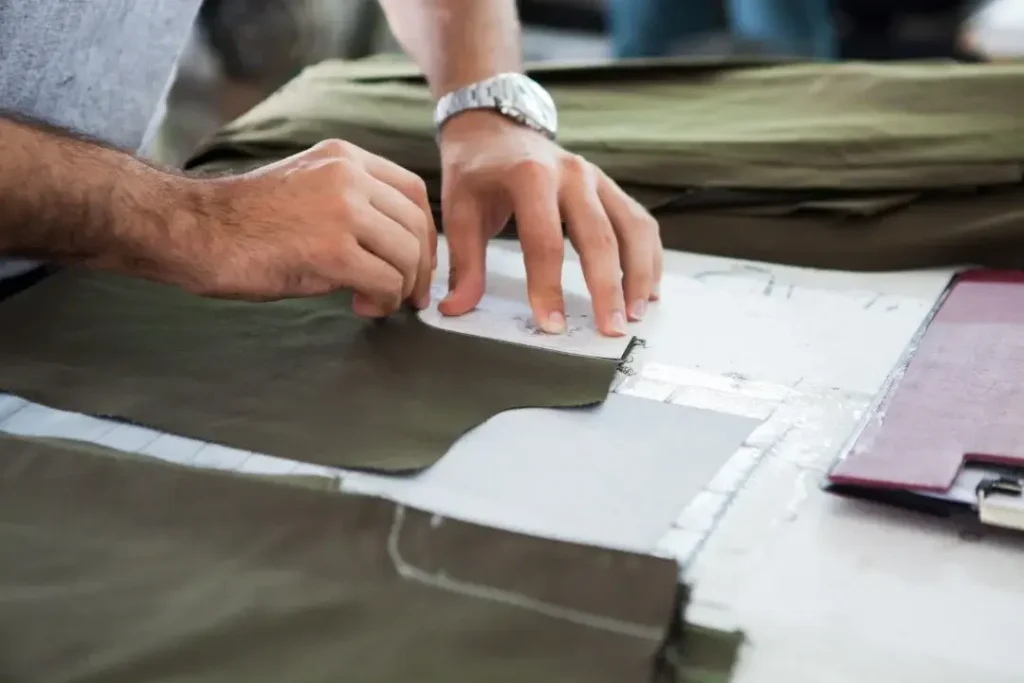
Why Clothing Brands Fail
Top Different Types of Shirts for Women and Men Top Different Types of Shirts for
Find out about The Rise of Pakistan's Textile Industry Opportunities and Challenges for Businesses Wanting to Benefit from Fast Market Growth!
Are you interested into the dynamic opportunities offered by the textile industry of Pakistan? This industry is important for Pakistan’s economy and helps with its income from exports. Pakistan is known for its high-quality cotton, which supports its textile businesses. The fact that cotton quality is so good is due to Pakistan’s strict quality control measures used in its manufacturing. Right now, the industry is growing quickly because of government support, new ideas, and increasing demand for different textile products. To start or grow a business in this market, one must understand the changes that are taking place. The government is easing the process of doing business with tax breaks and better infrastructure while also helping the majority of certified clothing manufacturer in Pakistan. New technology and a focus on being eco-friendly are improving how textiles are made, serving enterprises to meet global trends for being responsible. By using these changes in your business plans, you can use new technologies and eco-friendly practices to stand out and attract modern buyers. As you look into the rise of Pakistan’s textile industry also its opportunities and challenges, think about how these changes can help you achieve your goals and build strong partnerships. This change offers a great chance to make your company a leader in the global textile market, grow sustainably, and help shape the future of the industry.
Find how the framework, figures, and key areas stand placed for Pakistan’s textiles to so position your business well that you can take each one of these abundant of opportunities.

• Cotton, Yarn, Fabric, and Garments Production
The textile industry in Pakistan is multi-layered. It begins by growing quality cotton in Pakistan, which is then turned into yarn, woven into fabric, and made into garments. Each of these steps helps maintain the quality and competitive edge of the industry. Cotton is the basic raw material, and from it, the quality of yarn is determined, and the feel of the fabric and the look of the final garment are determined. From the understanding of every part of this process, your business can use the strengths of each stage to make better products for the global market.
• Value Chain Analysis
Detailed value chain analysis will show the key stages at which value is added from growing cotton to finishing garments. The knowledge of the process lets you to look for opportunities to reduce costs and transform while developing a partnership with suppliers and clothing manufacturers in Pakistan. Through active management of the textile value chain, your business can improve the quality of products, make operations more competent, and make higher profits in a globally competitive market.
|
Statistic
|
Value
|
Description
|
|---|---|---|
|
GDP Contribution
|
8.5%
|
Contribution of the textile sector to Pakistan's GDP.
|
|
Employment
|
40% of Industrial Workforce
|
Percentage of industrial employees working in textiles.
|
|
Export Revenue
|
$13.8 Billion (2020)
|
Total textile export earnings for Pakistan in 2020.
|
|
8.5%
|
Major Textile Hubs
|
Key cities driving textile production and exports.
|
|
Predicted Growth Rate
|
8-10% per year
|
Estimated annual growth rate for the textile industry.
|
• GDP Contribution: 8.5%
Do you know what is the contribution of the textile industry growth to Pakistan’s economy? Yes, indeed, this sector is of much value because it contributes approximately 8.5 percent to the GDP of Pakistan. Therefore, there seems to be an increased level of demand and output from this sector. Thus, this important sector will always prove helpful in increasing business in addition to reaping good economic benefits
• Employment: 40% Industrial Workforce
This industry caters to 40 percent of the industrial employees of Pakistan; hence it is a crucial source of employment. For this vast number, many talents are available to be hired for businesses so that high-quality products as well as the requirements of producing them can be met from skilled workers.
• Export Revenue ($13.8 Billion in 2020)
Total textile export earnings of Pakistan for the year 2020 were US$ 13.8 billion. Its export mechanism and trade networks provide a strong foundation for your corporate to explore international markets and expand your business into more countries.
• Faisalabad
Faisalabad is one of the most dominant textile production centres, also said as the “Manchester of Pakistan.” It has a well-developed industrial infrastructure and supply chain. So, it’s an excellent destination for companies seeking investment or partnership with leading producers.
• Lahore
Lahore is where traditionalism meets modern industry; therefore, it becomes the heart of textile modernization and apparel making. A lively business scene coupled with well-organized workers presents singular opportunities for businesses looking to fuse creativity with manufacturing.
• Karachi
Karachi is the necessary port city where the bulk of textile exports in this country happen. It may also help its industries become even more global as a logistical advantage.

• Textile Policy 2020-25
Pakistani government, through the Textile Policy 2020-25, has developed an operational plan for the textile sector that will increase this sector with support such as economic advantages and training to get their business working excellently with well-developed supply chain processes and to connect them further with more customers. Getting familiar with this policy helps you achieve accomplishment in a growing textile market.
• Export-Oriented Units (EOUs) Scheme
The EOU scheme facilitates export-oriented businesses whose operations are based on making exportable goods. Such an arrangement avails one of the following profits, for instance, tax holidays or fewer export procedures. It is going to save you your business costs and assist in competing with others more vigorously in the international marketplace.
• Duty-free Importation of Machinery
The government has offered the importation of machinery by trades without extra duty. This can empower you to get modern equipment without expending a lot upfront. It can also permit you to develop your products and remain competitive.
• Growing Demand for Pakistani Cotton
Ready to gain this growing international requirement of superior cotton? Pak Cotton is the best product for exports and is getting recognition on the international level more day by day. All these requirements provide business routes for your business about importing raw materials from Pakistan or finished products to international markets in exchange for growth in the business.
• Increase Exports to EU, US, and China
Textile exports of Pakistan are rising towards the European Union, the United States, and China. These are good paths through which your trade can increase sales for more customers. By focusing on these areas, your business will be able to improve sales and go international.
• Adoption of Automation and Digital Printing
Is your business ready to implement new technologies for productivity? Automation and digital printing are changing the textile world by making production faster with less waste. You can produce well textiles quickly with these technologies, meet all customer demands, and even reduce costs. This puts your business ahead in this competitive market.
• Sustainable Manufacturing Practices
The more sustainable products used and environmentally friendly ways of manufacturing will boost the image of your business. A practice like renewable energy utilization and recycling can also help in the reduction of environmental impact and attract more customers who will care to buy from your business in the long term.Using all these opportunities in the Pakistani textile industry, your business will grow and can successfully compete in the international market.

Knowing about the challenges of Pakistan’s textile industry helps your business to develop and prosper within this rapidly changing market.
• Impact on Production Costs and Competitiveness
The energy crisis increases costs because of a rise in production levels due to competition. With numerous power cuts and variable access to energy, many businessmen are compelled to find some other alternative, although pricier. However, it is important for those in business to see their energy woes so as not to have any extra charge and production costs. And getting energy-effective technologies for energy consumption is one active move to be competitive with anyone.
• Government Efforts to Address Energy Shortages
The Pakistani government is initiating reforms and projects in order to rise the supply of energy. This includes investing in renewable energy. Knowing this can benefit your business to be in line with the new policies and enjoy fresh solutions about energy. Joining government programs also reduces dependence on traditional sources of energy.
• Inefficient Transportation Networks
Poor logistics can cause delay, higher costs, and disruption. Understanding these issues will help you improve your logistics. You can be sure to increase proficiency while lowering risks by working with consistent logistic providers or by investing in better transport.
• Need for Modernized Ports and Warehouses
Better flow of goods and even international standards require modernized facilities. Outdated structures hinder your efforts as an exporter, and competition edge is also reduced on your part. Helping with the process of modernizing will ease your operations as well as your distribution processes.
• Labor Laws and Working Conditions
Maintaining a good reputation and stable workforce requires adherence to labour laws. Compliance with labour regulations helps protect your business and supports ethical practices. A business that emphasizes fair labour practices and a safe work environment will attract and retain skilled workers.
• Environmental Concerns and Regulations
As concern for sustainability increases, these conditions are becoming more vital to satisfy. It is difficult to be in compliance with all of these rules, but it also gives one the opportunity to revolutionize. Followed by compliance with environmental standards, the possibility to decrease negative impacts on the environment may be guaranteed as well as the savings and environmentally conscious consumers for your business. Having accountability to the environment makes your business the leader in the textile industry.

|
Trend
|
Description
|
Impact on Industry
|
|---|---|---|
|
Predicted Growth Rate
|
8-10% per year
|
Expected annual growth rate for the textile industry, driven by government initiatives and global demand.
|
|
Technical Textiles
|
Increasing use in specialized applications
|
Expands product offerings and market reach across various sectors, including medical and automotive.
|
|
E-Commerce Growth
|
Online retail sales expected to reach $4 trillion globally by 2025
|
Necessitates digital transformation in sales strategies for textile brands to capture online market share.
|
|
Sustainable Practices
|
60% of consumers prefer brands with sustainable practices
|
Encourages brands to adopt eco-friendly production methods to attract environmentally conscious consumers.
|
• Predicted Growth Rate (8-10% per year)
With 8-10% Pakistan’s clothing market growth rate estimated annually, it’s definitely going to grow much more. A knowledge of the same could help you with business planning for the future by helping in meeting the demands of markets and take advantage of the newly achieved opportunities. The chances can be maximized through gaining a greater share in profits in the Pakistan textile market.
• New Trends (Technical Textiles, Online Shopping)
Technical textiles are special applications. New paths for modernization result from these types of technical textiles. Online shopping is a new mode of selling products and it is convenient to the consumers, too. This means that your enterprise will have more products and utilize other means of selling, making you grow with a comparative advantage over your participants.
• Partnerships and Foreign Investments
The textile sector in Pakistan provides excellent opportunities for partnerships and foreign investments. Forming partnerships helps your company influence local knowledge and resources as you expand your business operations. Foreign investments enable you to tap into world markets, the latest technology, and helpful networks. When properly aligned, foreign partnerships can put your company on the top and confirm continued success in the long term.
• Public-Private Partnerships (PPPs)
PPPs are increasingly being encouraged for infrastructure development, innovation, and competitiveness of the textile industry. These arrangements may be one in sharing resources and knowledge for both sectors, public and private. An opportunity in PPPs will give your organization access to government support and financing, and participation in improving the overall industry.
• Product and Market Expansion
The introduction of new products and expansion to new markets can indeed accelerate your growth and reduce the risks associated with market capacity or economic changes. New textile areas or international markets will provide your business with more customers, confirming a steady income stream and solidifying your place in the textile industry.
• Innovation as a Tool to Stay Competitive
Continuous innovation in what you produce, the manner of designing your products, and running your business is the way forward; especially nowadays with this ever-changing textile industry. With investment in research and development, new and latest technology, and a culture of innovation can drive better products and effectiveness as well as growing businesses at the very fore of changing a textile market.By focusing on the above future strategies and opportunities in Pakistan’s textile industry, your market can become successful and grow sustainably.
In Conclusion, it is the rise of Pakistan’s textile industry is set to make a huge comeback with growth and change. A very major portion of its economy produces good quality cotton and other textiles. As such, the government plans, the Textile Policy 2020-25, assist the industry, solving matters like energy shortages. With the growing demand for textiles in the EU, US, and China, the business community of Pakistan has opportunities to export their products. Business in this market would have to face the challenges of complying with the labour and environmental rules while taking benefit of the government help along with the demands from the world. They could capitalize through new technology and eco-friendly methods by improving effectiveness, product quality, and competitiveness. Even growth and new ideas would come more as a result of cooperation due to partnership working. It means a broader range of products offered, adapting to the changing economy, and making use of new trends like technical textiles and online shopping.
The main opportunities include utilization of government support under the Textile Policy 2020-25, capturing increased demand from markets such as the EU, US, and China, and taking advantage of new technologies, including automation and green process technologies, to maintain competitiveness.
They can use energy-saving technologies and explore renewable sources of energy to reduce the cost and increase the reliability. Moreover, they must collaborate with government initiatives aimed at resolving the energy crises for sustainable assistance.
Companies should involve in partnerships and foreign investment to penetrate new markets and acquire new technologies. Companies can also be part of public-private Partnerships to share resources and get support from the government, thereby improving infrastructure and competitiveness.
Expert Custom Clothing Manufcaturer

Top Different Types of Shirts for Women and Men Top Different Types of Shirts for

What You Must Know About Clothing Samples? Before You Produce a Single Garment: What You

How Much Does It Cost To Make a Hoodie A Complete Cost Breakdown for Custom

Discover the Types of Buttons Discover the Types of Buttons That Transform Style and Functionality
Most Recent Posts
Expert Custom Clothing Manufcaturer
Join our Mailing list!
Get all latest news, exclusive deals and updates.